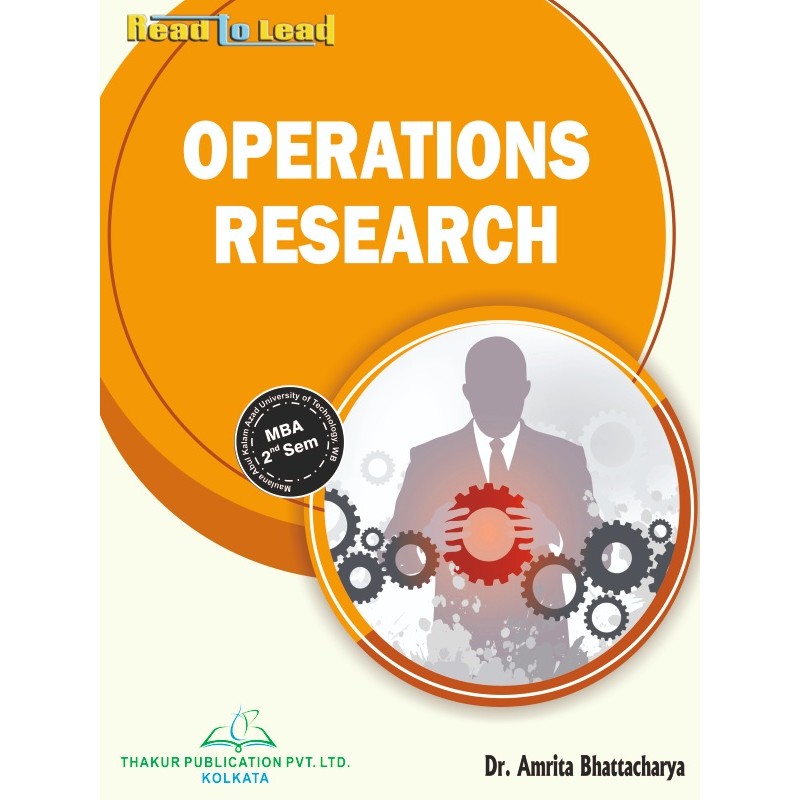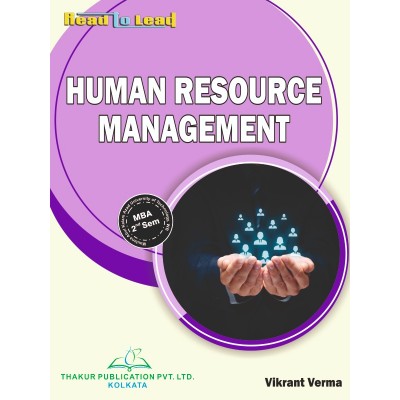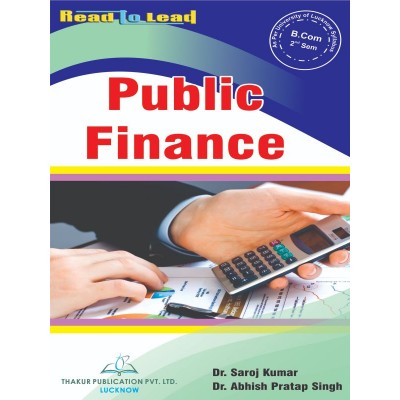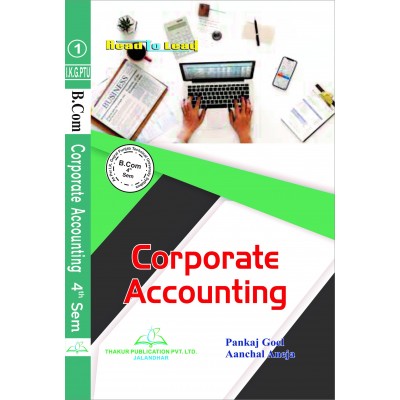Categories
- Pharmacy
-
Nursing
-
MBA
-
BBA
- U.P. State University
- Veer Bahadur Singh Purvanchal University, Jaunpur
- Chaudhary Charan Singh University, Meerut
- Dr. Bhimrao Ambedkar University, Agra
- Chhatrapati Shahu Ji Maharaj University, Kanpur
- Mahatma Jyotiba Phule Rohilkhand University, Bareilly
- Mahatma Gandhi Kashi Vidyapith, Varanasi
- Dr. Ram Manohar Lohia Avadh University, Ayodhya
- Deen Dayal Upadhyaya Gorakhpur University
- Prof. Rajendra Singh (Rajju Bhaiya) University, Prayagraj
-
BCA
- UP State Universities
- University of Pune
- I.K.Gujral Punjab Technical University (PTU)
- University of Rajasthan
- Rashtrasant Tukadoji Maharaj Nagpur University
- Uttar Pradesh NEP2020
- University of Rajasthan ,Jaipur (According to NEP-2020)
- BCCA (B. Com - Computer Science)
- Haryana
- West Bengal
- BBA (CA)
- PUNE BCA (Sci,Commerce)/B.Com (CA)
- Dr. A. P. J. Abdul Kalam Technical University, Lucknow ( AKTU )
- MCA
-
B Ed
- Lucknow University B.Ed Books
- Chaudhary Charan Singh University/Maa Shakambhari University, Saharanpur
- Dr Bhim Rao Ambedkar University, Agra
- Mahatma Gandhi Kashi Vidyapeeth, Varanasi
- Chhatrapati Shahu Ji Maharaj University
- Prof. Rajendra Singh (Rajju Bhaiya) University, Prayagraj (PRSU)
- Mahatma Jyotiba Phule Rohilkhand University(Mjpru), Bareilly
- Dr. Ram Manohar Lohia Avadh University, Ayodhya
- Bundelkhand University, Jhansi
- B.A,B.ed
- B.Sc, B.ed
- Deen Dayal Upadhyaya Gorakhpur University
- Veer Bahadur Purvanchal University (VBPU)
- Maharaja Suhel Dev State University ,Azamgarh (MSDSU)
- Raja Mahendra Pratap Singh State University, Aligarh (RMPSSU)
- Barkatullah Vishwavidyalaya (Bhopal)
- Jiwaji University (Gwalior)
- Vikram University (Ujjain)
- Dr. Harisingh Gour University (Sagar)
- Devi Ahilya Vishwavidyalaya (Indore)
- Rani Durgavati Vishwavidyalaya (Jabalpur)
- Awadhesh Pratap Singh University (Rewa)
- Maharaja Chhatrasal Bundelkhand University (Chhatarpur)
- D. EL. ED
- TET
-
B Com
-
B Sc
- B.Sc. U.P. State Universities Common Syllabus NEP
- Veer Bahadur Singh Purvanchal University, Jaunpur
- University of Lucknow
- Chaudhary Charan Singh University, Meerut
- Madhya Pradesh
- Chhatrapati Shahu Ji Maharaj University, Kanpur
- Dr. Bhimrao Ambedkar University, Agra
- Mahatma Gandhi Kashi Vidyapith, Varanasi
- DEEN DAYAL UPADHYAYA GORAKHPUR UNIVERSITY
- Prof. Rajendra Singh (Rajju Bhaiya) University, Prayagraj
- Dr. Ram Manohar Lohia Avadh University, Ayodhya
- Mahatma Jyotiba Phule Rohilkhand University, Bareilly
- Uttarakhand State Universities
- B.Sc. Bihar Universities Common Syllabus NEP
- University of Rajasthan (Jaipur)
- Haryana
-
Bachelor of Arts [B.A.]
- B.A. Of U.P. State Universities Common Syllabus NEP
- Veer Bahadur Singh Purvanchal University, Jaunpur
- University of Lucknow
- Chaudhary Charan Singh University, Meerut
- Chhatrapati Shahu Ji Maharaj University, Kanpur
- Dr. Bhimrao Ambedkar University, Agra
- Mahatma Gandhi Kashi Vidyapith, Varanasi
- Deen Dayal Upadhyaya Gorakhpur University
- Prof. Rajendra Singh (Rajju Bhaiya) University, Prayagraj
- Dr. Ram Manohar Lohia Avadh University, Ayodhya
- Mahatma Jyotiba Phule Rohilkhand University, Bareilly
- Madhya Pradesh
- Uttarakhand
- Bihar
- University of Rajasthan (Jaipur Syllabus as Per NEP2020)
- Haryana NEP-2020
- B Tech
- LLB
- SWA Education
OPERATIONS RESEARCH MAKAUT MBA SECOND SEM

AUTHOR: Dr. Amrita Bhattacharya
ISBN : 978-93-5755-527-2
Tax excluded
Contents
|
MODULE-1 |
||
|
Chapter 1: Linear Programming |
||
|
1.1. |
Linear Programming Problems(LPP) |
13 |
|
1.1.1. |
Meaning and Definition |
13 |
|
1.1.2. |
General Mathematical Model of LPP |
13 |
|
1.1.3. |
Assumptions of Linear Programming Model |
14 |
|
1.1.4. |
Components of Linear Programming Problem |
14 |
|
1.1.5. |
Applications of Linear Programming(LP) |
15 |
|
1.1.6. |
Formulation of Linear Programming Model |
15 |
|
1.1.7. |
Methods of Solving LP Problems |
18 |
|
1.2. |
Graphical Solution |
18 |
|
1.2.1. |
Introduction |
18 |
|
1.2.2. |
Graphical Solution Method of LPP/Steps of Graphical Methods of LPP |
19 |
|
1.2.3. |
Maximisation Problems |
19 |
|
1.2.4. |
Minimisation Problems |
21 |
|
1.2.5. |
Mixed Constraints Problems |
24 |
|
1.2.6. |
Special Types of LPP in Graphical Method |
25 |
|
1.2.6.1. |
Infeasibility |
25 |
|
1.2.6.2. |
Unboundedness |
26 |
|
1.2.6.3. |
Multiple Optimal Solutions |
26 |
|
1.3. |
Simplex Method |
27 |
|
1.3.1. |
Introduction |
27 |
|
1.3.2. |
Steps of Simplex Algorithm |
27 |
|
1.3.3. |
Slack, Surplus Variables and Artificial Variables |
28 |
|
1.3.4. |
Maximisation Problems |
28 |
|
1.3.5. |
Minimisation Problems |
31 |
|
1.3.6. |
Big-M Method/Primal-Penalty Method |
33 |
|
1.3.7. |
Special Types of LPP in Simplex Method |
35 |
|
1.3.7.1. |
Infeasibility |
35 |
|
1.3.7.2. |
Unboundedness |
37 |
|
1.3.7.3. |
Multiple Optimal Solutions |
38 |
|
1.3.7.4. |
Degeneracy |
38 |
|
1.4. |
Duality |
40 |
|
1.4.1. |
Introduction |
40 |
|
1.4.2. |
Primal and Dual Problem |
40 |
|
1.4.3. |
Relationship between Primal and Dual |
40 |
|
1.4.4. |
Principles of Duality |
41 |
|
1.4.5. |
Economic Interpretation of Duality |
43 |
|
1.4.5.1. |
Economic Interpretation of Dual Variables |
43 |
|
1.4.5.2. |
Economic Interpretation of Dual Constraints |
43 |
|
1.5. |
Post Optimality /Sensitivity Analysis |
44 |
|
1.5.1. |
Introduction |
44 |
|
1.5.2. |
Effects on an LP Model by Sensitivity Analysis |
44 |
|
1.5.3. |
Graphical Approach to Sensitivity Analysis |
44 |
|
1.5.3.1. |
Changes in Objective Function Coefficients |
45 |
|
1.5.3.2. |
Changes in Right-Hand-Side(RHS) Values (Constraints) |
45 |
|
1.5.3.3. |
Shadow Prices |
46 |
|
1.5.4. |
Simplex Method Approach to Sensitivity Analysis |
46 |
|
1.5.4.1. |
Addition of Variables |
47 |
|
1.5.4.2. |
Deletion of Variables |
47 |
|
1.5.4.3. |
Addition of Constraints |
49 |
|
1.5.4.4. |
Deletion of Constraints |
49 |
|
1.6. |
Exercise |
50 |
|
|
|
|
|
Chapter 2: Transportation Problems |
||
|
2.1. |
Transportation Problems (TP) |
53 |
|
2.1.1. |
Introduction |
53 |
|
2.1.2. |
Mathematical Formulation of Transportation Problem |
53 |
|
2.1.3. |
Assumptions in Transportation Problem |
54 |
|
2.1.4. |
Terminologies Used in Transportation Problem |
54 |
|
2.1.5. |
Transportation Algorithm |
55 |
|
2.1.6. |
Applications of Transportation Model |
55 |
|
2.1.7. |
Transportation Methods for Finding Initial Solutions |
55 |
|
2.1.7.1. |
North-West Corner Method (NWCM) |
55 |
|
2.1.7.2. |
Least Cost / Matrix Minima Method |
58 |
|
2.1.7.3. |
Vogel’s Approximation Method (VAM) |
60 |
|
2.1.8. |
Test for Optimality Using Modified Distribution Method (MODI) Method |
62 |
|
2.1.8.1. |
Steps of MODI Method |
63 |
|
2.1.8.2. |
Loops in Transportation Table |
64 |
|
2.1.9. |
Special Cases in Transportation Problems |
71 |
|
2.1.9.1. |
Balanced Transportation Problems |
72 |
|
2.1.9.2. |
Unbalanced Transportation Problems |
73 |
|
2.1.9.3. |
Minimisation Transportation Problems |
76 |
|
2.1.9.4. |
Maximisation Transportation Problem |
77 |
|
2.1.9.5. |
Degeneracy in Transportation Problems |
82 |
|
2.2. |
Exercise |
84 |
|
|
|
|
|
Chapter 3: Assignment Problems |
||
|
3.1. |
Assignment Problems |
85 |
|
3.1.1. |
Introduction |
85 |
|
3.1.2. |
Mathematical Statement of the Problem |
85 |
|
3.1.3. |
Applications of Assignment Model |
85 |
|
3.1.4. |
Hungarian Method of Solution |
86 |
|
3.1.5. |
Special Cases in Assignment Problems |
87 |
|
3.1.5.1. |
Balanced Assignment Problems |
88 |
|
3.1.5.2. |
Unbalanced (Non Square Matrix) Assignment Problems |
89 |
|
3.1.5.3. |
Minimisation Assignment Problems |
91 |
|
3.1.5.4. |
Maximisation Assignment Problems |
93 |
|
3.1.5.5. |
Multiple Optimal Solutions |
95 |
|
3.1.5.6. |
Restrictions on Assignment Problems/ Restricted Assignment Problems |
98 |
|
3.1.5.7. |
Traveling Salesman’s Model (Or Routing Problem) |
100 |
|
3.1.6. |
Difference between Transportation and Assignment Problem |
101 |
|
3.2. |
Exercise |
102 |
|
|
|
|
|
Chapter 4: Theory of Games |
||
|
4.1. |
Theory of Games/Game Theory |
104 |
|
4.1.1. |
Introduction |
104 |
|
4.1.2. |
Concept of Game |
104 |
|
4.1.3. |
Competitive Situations |
104 |
|
4.1.4. |
Terminology of Game |
105 |
|
4.1.5. |
Assumptions of Game |
105 |
|
4.1.6. |
Saddle Point |
105 |
|
4.1.7. |
Value of Game |
106 |
|
4.1.8. |
Strategies of Game |
106 |
|
4.1.8.1. |
Pure Strategy |
107 |
|
4.1.8.2. |
Mixed Strategy |
107 |
|
4.1.9. |
Solutions of Game |
107 |
|
4.1.10. |
Advantages of Game Theory |
107 |
|
4.1.11. |
Disadvantages of Game Theory |
108 |
|
4.1.12. |
Application of Game Theory |
108 |
|
4.1.13. |
Types of Game |
108 |
|
4.2. |
Two Person Zero-Sum Game |
109 |
|
4.2.1. |
Introduction |
109 |
|
4.2.2. |
Payoff Matrix |
109 |
|
4.2.3. |
Assumptions of Two Person Zero Sum Game |
110 |
|
4.2.4. |
Pure Strategies - Games with Saddle Points: Minimax & Maximin Criteria |
110 |
|
MAKAUT2024/MBA/2/01
36 Items
New
6 other products in the same category:
Comments (0)
No customer reviews for the moment.
Your review appreciation cannot be sent Report comment
Are you sure that you want to report this comment?
Report sent
Your report has been submitted and will be considered by a moderator.
Your report cannot be sent Write your review Review sent
Your comment has been submitted and will be available once approved by a moderator.
Your review cannot be sent Customers who bought this product also bought:Marketing Management
Price
₹200.00
Click below to Buy E-Book Edition:
₹120 E-BOOK GOOGLE PLAY
ISBN- 978-93-6180-413-7
Author- Dr. Saroj Kumar , Ms . Namrata Dubey
Business Mathematics - I...
Price
₹210.00
AUTHORS: Prof. Inamdar Tarique , Mr. Pawan Ashok Verma
AUTHORS: 9789361803819
Marketing Management...
Price
₹230.00
ISBN -978-93-5755-418-3
Authors - (Prof.) (Dr.) Moumita Poddar, Mr. Arpan Mukherjee
| ||



















